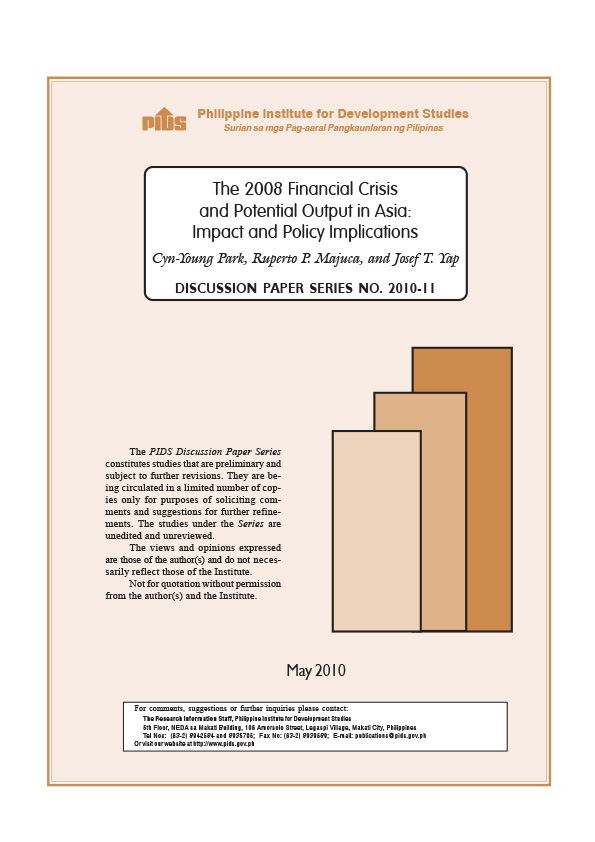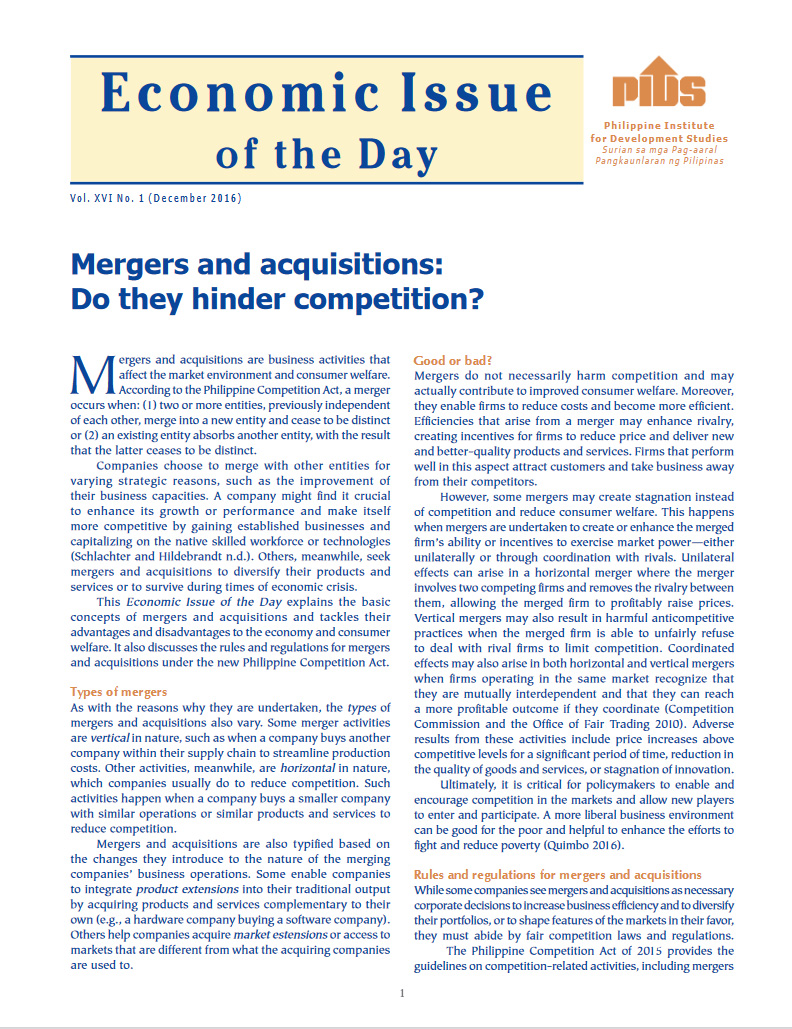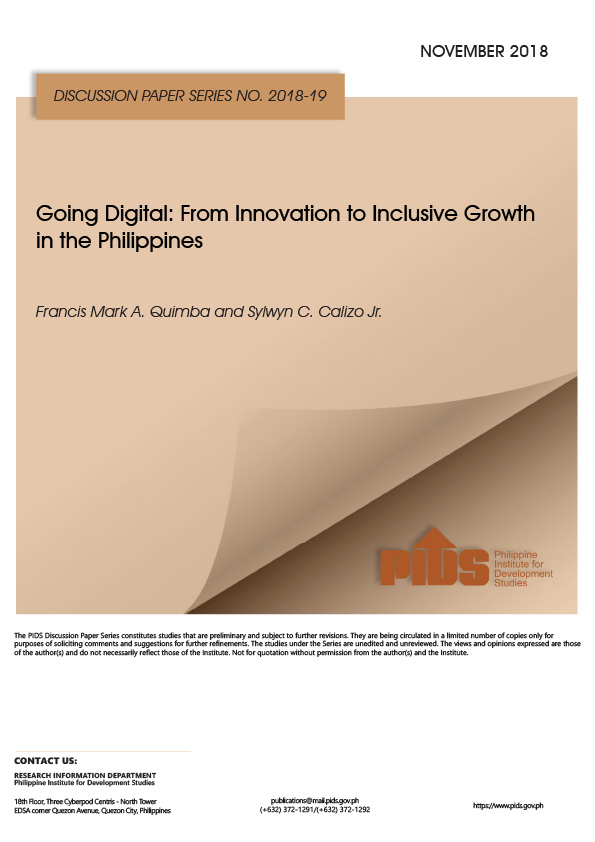We all agree that Philippine agriculture is in poor shape. I trace this to lack of irrigation, lack of roads, insufficient research and development (R&D) spending, lack of productive seeds, excessive intrusion by middle men, antiquated machinery, (you don’t dry palay on a national highway)–the list is endless.
One third of the Philippine populace depends on agriculture to survive, and survive is just about the best this sector can do. Among economic sectors, this has has the highest percentage of the poor. Also, farmers are among the country’s poorest, earning a meager income of P170 every day, which is about a third of the daily minimum wage in Metro Manila. And they account for a third of the country’s total workforce.
The Comprehensive Agrarian Reform Program (CARP) is a major contributor to this poverty. UP School of Economics professor and National Scientist Raul Fabella, in his discussion paper "CARP: Time to Let Go,” noted that CARP only created a new class of people: the "landed poor.”
Poverty incidence in CARP areas is 54 percent; it’s lower at 35 percent in non-CARP areas. Also, the non-tradability of CARP farms (a major weakness of the law) has destroyed the formal land market, prevented best use of farms, and affected the development of formal credit. (You can’t borrow without tradable collateral.)
It always bothers me when politicians take an "all or nothing” approach to issues, and CARP is one of these "all or nothing” plunges. It sounded like a nice idea, alright: Every farmer should own a land to till. (Well, shouldn’t every urban worker as well own one for his own house? But we’re digressing.)
Agriculture is a multifarious business, involving a wide range of crops that require different processes to produce. You don’t apply one restrictive law to all. Rice is a crop that has to be manually done; small plots can be just as productive as large ones. Splitting vast tracts of land into small plots for rice production makes some sense.
But in some other crops like sugar, it makes no sense. Sugar requires mechanization, machinery and equipment to be produced efficiently and to be competitive in the market. It requires large mills with assured supply. But stable supply and, more importantly, consistent quality supply from several hundred farmers separately producing such supply from small plots just can’t be assured.
Going back to rice, the National Food Authority (NFA) should have no role in the trade of this commodity. If there were an open market, the price of regular milled rice could be reduced by as much as P14 per kilogram. According to a Philippine Institute for Development Studies (PIDS) study, "welfare analysis indicates that, in 2013, if quantitative restrictions were eliminated and rice imports were allowed to freely enter the country, rice imports would have increased tenfold, bringing down the retail price of rice to P19.80 per kilogram from P33.08 per kilogram.”
PIDS economist Roehlano Briones blames the government’s rice self-sufficiency program for the rising rice prices. "… you want the rice farmers domestically to be able to supply all of the rice requirements of the country. They can do it, but you have to pay them a much higher price than what is available in the world market.”
Self-sufficiency is also a foolish goal, given that the country is behind in the development of, and support for, the rice industry. Irrigation has not been provided; construction of farm-to-market roads is slow.
One has to wonder why there is so much emphasis on rice production despite the fact that "the Philippines has less comparative advantage in rice production compared to countries drained by the world’s large rivers: India, Burma, Thailand and Vietnam. . . . Add to that the 20 typhoons that hit the country every year (decimating crops). Rice production cost in the Philippines is higher than in Thailand, Vietnam and India,” noted Rolando Dy, vice chair of AgriBusiness and Countryside Development Committee and the executive director of the Center for Food and AgriBusiness of the University of Asia & the Pacific.
If I may add: Who should we protect–an estimated three million rice farmers and their hangers-on (read: middlemen), or some 100 million Filipinos who eat rice every day?
Average rice yield in the Philippines is 3.9 tons per hectare, much lower than 5-6 tons or more in other rice-producing Asean countries (e.g., Indonesia and Vietnam), this according to the Food and Agriculture Organization.
I’ve never understood this absurd drive for self-sufficiency. I don’t grow rice for my household. I’m in a business that earns far more, so I can buy all the rice I need. Well, the whole nation can do likewise: Engage rice farmers in the production of higher-earning crops, where the Philippines can compete successfully. We can buy the rice from other countries.
There’s a proposal to take the NFA out of rice trading altogether, and let the private sector do it instead, in an open market. But the bill to that effect is still pending and is unlikely to pass the present Congress. Yet that’s what’s needed to be done. Then smuggling would no longer be advantageous and cartels would die.
The NFA has incurred a staggering P170 billion in losses over the past 10 years. Remove the cause of that loss and the country would save enough to compensate for the revenues lost from lower taxes and tax rates on salaries that is now being proposed. And it will lead to much lower rice prices. Now that’s something that would benefit us all far more than wasting money on inefficiently implemented programs protecting farmers. Then teach those farmers to grow crops of higher value.//
Related Posts
Publications
Press Releases
Video Highlights
[No related items]







